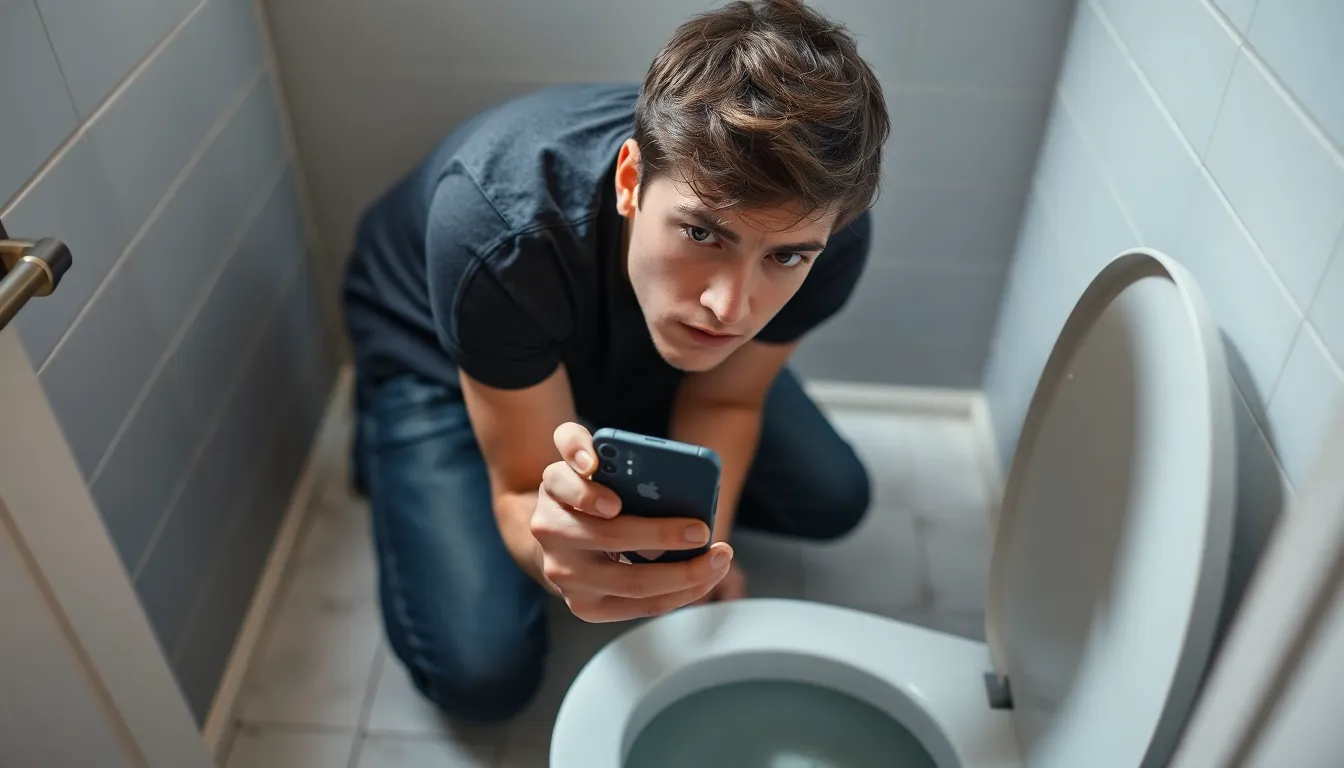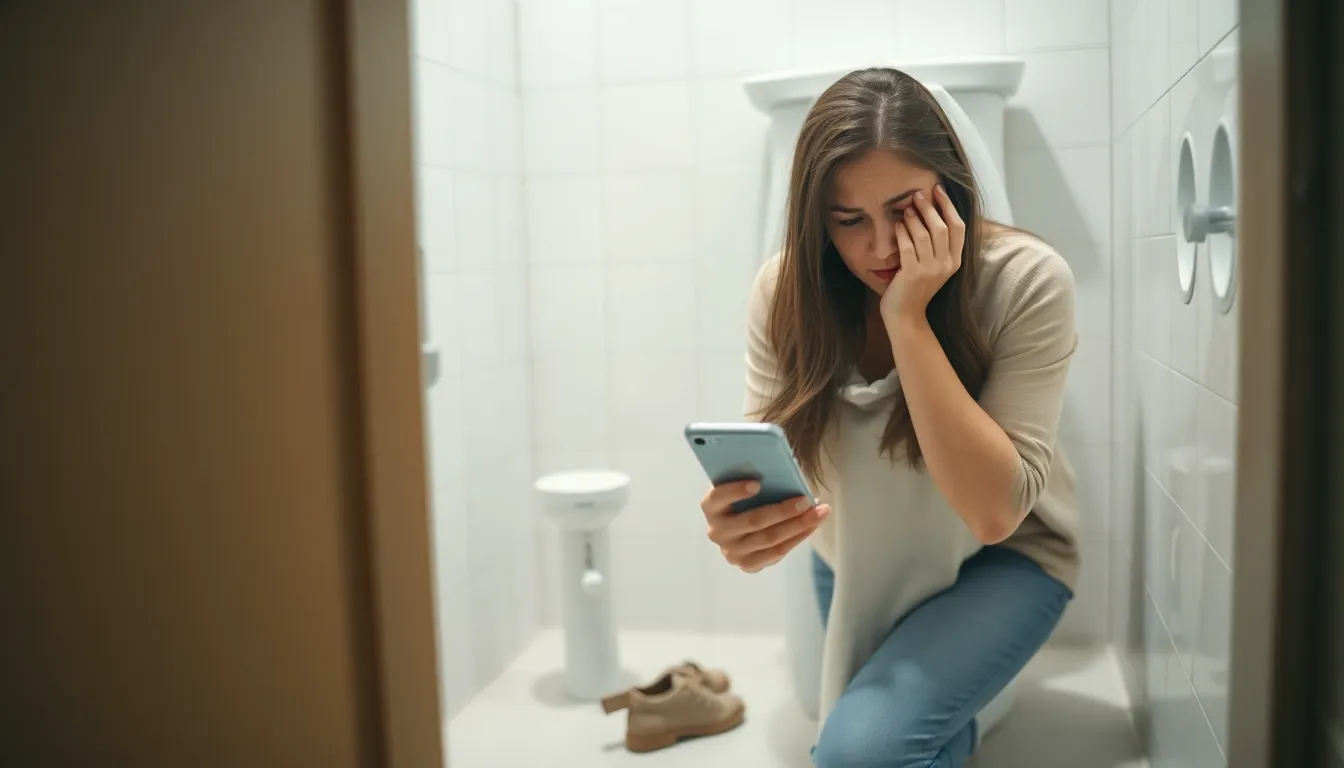Imagine this: you’re scrolling through your favorite social media app, and in a moment of sheer horror, your iPhone takes a dive into the toilet. Panic sets in, and your heart races as you ponder the fate of your beloved device. But don’t worry, it’s not the end of the world—or your phone!
Table of Contents
ToggleWhat To Do If iPhone Falls In Toilet
Rescue the iPhone immediately. Time is critical to prevent further damage. If the device is still on, turn it off right away. This action reduces the risk of short-circuiting.
Next, remove it from the toilet and avoid shaking. Shaking can allow water to spread to internal components. Dry the exterior with a soft cloth or towel, focusing on ports and buttons.
After drying, place the iPhone in a bag of uncooked rice or silica gel packets. Both options absorb moisture effectively. Leave it submerged for at least 24 to 48 hours for maximum drying.
Consider using a fan or a cool air setting. Direct air can help evaporate moisture without causing additional harm. Avoid using a hairdryer since high heat may damage internal parts.
Check for any signs of corrosion or damage once the drying period ends. If corrosion appears, it’s best to consult a professional repair service. They can provide a thorough examination and repair options.
If the iPhone shows no signs of life, consider contacting Apple Support. They offer detailed guidance and repair solutions, presenting options tailored to specific issues. Recovery rates depend on how quickly actions are taken after the accident.
Understanding that immediate steps enhance chances of survival helps in this situation. Follow these protocols to maximize the likelihood of restoring the device to full functionality.
Immediate Actions To Take

Taking swift action after an iPhone falls in the toilet can prevent serious damage. Follow these steps for the best chance of recovery.
Remove The iPhone From Water
First, grab the iPhone as soon as possible. Prolonged exposure increases the risk of internal damage. Pull the device from the water gently. Avoid any sudden movements that could force water deeper into the phone. If the toilet water is clean, quickly handle the iPhone without hesitation. Next, dry the exterior carefully with a soft cloth to remove excess moisture. Many people find that shaking the device only worsens water entry. Instead, ensure the ports and openings are free from water. Act rapidly to protect the phone’s internal components.
Turn Off The Device
Turning off the iPhone is critical for preventing short-circuiting. If it’s still on, power it down immediately. This action reduces the chance of electrical damage. If the screen remains responsive, simply use the shutdown feature. In case the device is unresponsive, pressing and holding the power button is effective. Avoid relying on other methods like shaking or force. Keeping the device off minimizes the risk of further damage. After turning off the phone, continue to follow other moisture-removal steps to aid in recovery.
Drying Your iPhone
Drying the iPhone quickly is crucial for minimizing damage. Following these steps boosts the chances of recovery.
Use A Towel To Wipe Off Excess Water
Grab a soft, lint-free towel immediately. Wiping the exterior helps remove visible water. Focus on ports and speaker openings where water might accumulate. This action prevents moisture from seeping deeper. Pat the iPhone gently; avoid vigorous rubbing as it might force water inside. Control the towel’s contact with sensitive areas by being gentle.
Air Dry Vs. Using Rice
Choosing between air drying and using rice depends on the situation. Air drying naturally allows moisture to evaporate without additional materials. Place the iPhone in a dry, well-ventilated area for optimal results. On the other hand, placing it in a bag of uncooked rice or silica gel packets helps absorb moisture effectively. Rice can be less effective compared to silica, which is designed for moisture absorption. Both methods require patience; ideally, leave the iPhone for at least 24 to 48 hours. Prioritize checking the phone’s condition and corrosion signs after the drying period ends.
Preventing Future Incidents
Taking precautions can significantly reduce the risk of future accidents with iPhones. Implementing a few strategies helps in avoiding unfortunate incidents like dropping the device in the toilet.
Using Waterproof Cases
Using waterproof cases offers robust protection against water damage. Many options on the market provide varying levels of waterproofing, allowing users to choose based on their lifestyle. Consider cases designed for everyday use or those meant for specific activities like swimming. Investing in a quality waterproof case minimizes the risk of damage from accidental splashes or drops into water.
Being Mindful In Restrooms
Being mindful in restrooms plays a critical role in preventing mishaps. Keeping the iPhone out of reach when washing hands or using the toilet helps reduce accidents. Placing the device securely on a nearby shelf or in a pocket removes the temptation to use it in precarious situations. Awareness of surroundings allows for safer handling of the phone, particularly in environments where water is present.
When To Seek Professional Help
Sometimes, despite best efforts, an iPhone may show signs of significant damage after exposure to water. Indicators such as unusual behavior, persistent screen issues, or failure to charge can signal the need for professional intervention. Users should consider visiting a repair service if water damage is evident or if the device remains unresponsive after the drying period.
Occasionally, corrosion can occur internally, leading to long-term issues. Signs of corrosion often include discoloration around ports or the device’s chassis. If corrosion is present, seeking a professional inspection becomes crucial to prevent further damage.
In certain cases, repairing a water-damaged iPhone might require specialized tools and expertise. Technicians at repair shops possess the knowledge to disassemble devices safely to assess the extent of the damage. Their experience often allows for precision in cleaning internal components that individuals may not achieve.
Moreover, Apple Support can provide valuable guidance for those unsure of the next steps. They assess warranties and service options to help streamline the repair process. Direct consultation with Apple Support ensures users make informed decisions on repair or replacement based on device status.
Ultimately, prioritizing professional help can lead to better outcomes, especially when initial recovery efforts do not yield satisfactory results. Addressing potential issues sooner rather than later enhances the chances of restoring iPhone functionality effectively.
Accidentally dropping an iPhone in the toilet can be distressing but taking prompt action can make a significant difference. By following the recommended steps to dry the device and avoid further damage, users can improve their chances of recovery. Patience is key during the drying process as rushing to power it on too soon can lead to complications.
For those who encounter persistent issues post-drying, seeking professional assistance is crucial. Repair specialists have the expertise to address water damage effectively. Implementing preventive measures like using waterproof cases can help avoid future mishaps. With the right approach and care, users can navigate this challenging situation successfully.




